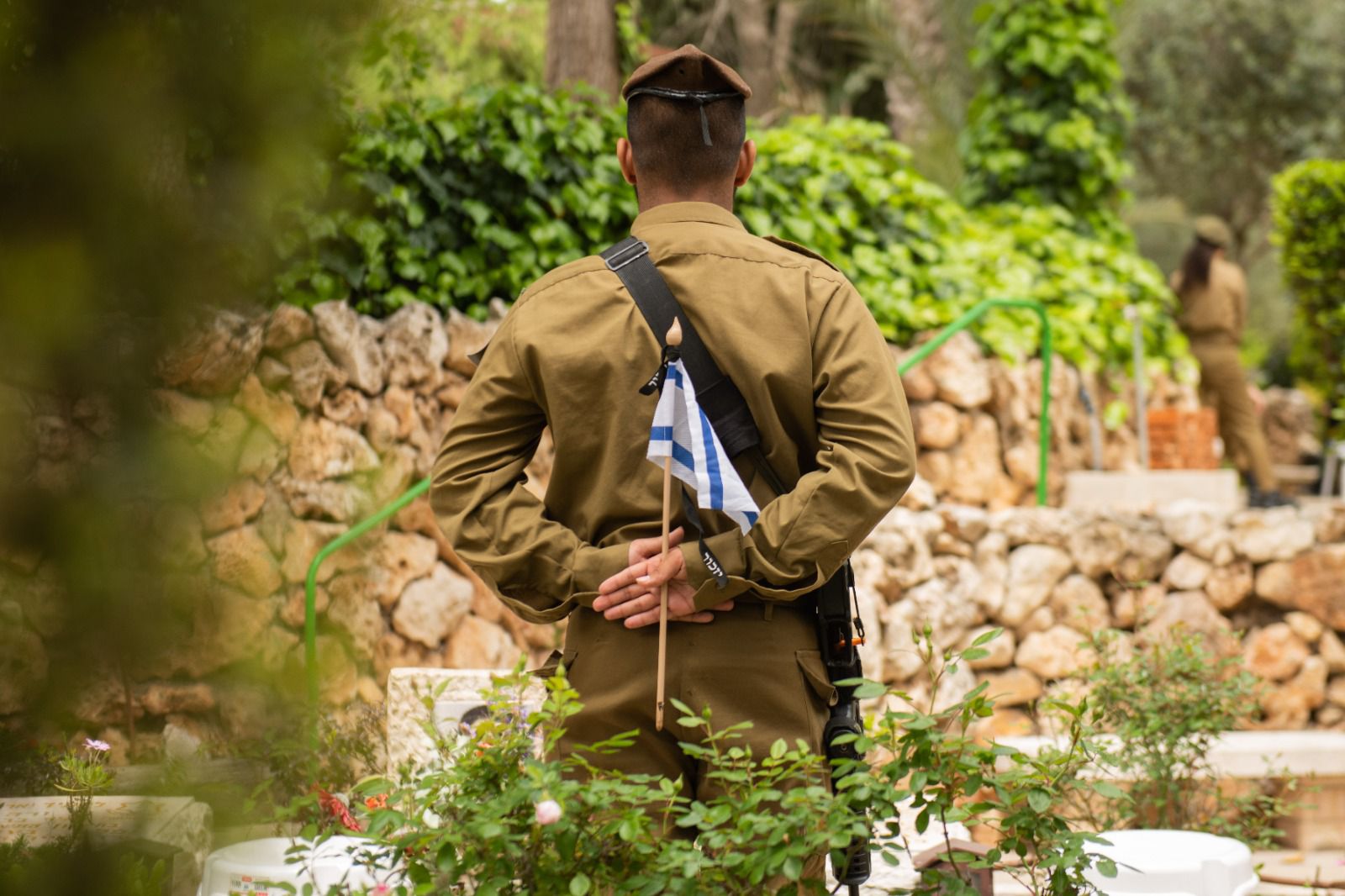A conversation with Rav Yitzchak Dovid Grossman about the new bestselling biography.

Highlighting: “The Ribnitzer: The Life, Sanctity, and Legacy of Rav Chaim Zanvil Abramowitz” by Rabbi Nachman Seltzer. Mesorah Publications Ltd. 2023. Hardcover. 392 pages. ISBN-13: 978-1422639344.
(Courtesy of Artscroll) The Ribnitzer Rebbe’s avodas Hashem was unique. He lived his life on an extraordinarily lofty plane, reaching levels of mesiras nefesh and deveikus that seem almost unbelievable in our modern world.
Yet, as elevated as his own life was, there are lessons to be learned from him, even for Jews like us, who can hardly envision the manner in which the Ribnitzer served Hashem and His people.
Rav Yitzchak Dovid Grossman, the beloved rav of Migdal HaEmek and subject of the bestselling book Living Legend, felt a special bond with the Ribnitzer, Rav Chaim Zanvil Rabinowitz, and had several memorable encounters with him that are discussed in the brand new ArtScroll biography, The Ribnitzer, authored by Rabbi Nachman Seltzer. We asked him questions about the Ribnitzer, especially about how we can take the life and lessons of the Rebbe and relate it to our own lives.
• • • •
In this book, we read about the Rebbe’s incredible avodah, particularly his fasting and his immersions in the mikveh. This kind of avodah is out of reach for almost all of today’s readers. So what can we learn from his avodah to make our own avodas Hashem better?
What can we learn from his unbelievable avodah, his fasting and his constant immersions? Just touch them lightly. It is written, “[Every person should ask himself]: When will my deeds yagiu (reach) [the level of] the deeds of my fathers?” On which the Baal Shem Tov’s students said, “’Yagiu’—as in ‘negiah’ (to touch).”
You can’t do what the Ribnitzer did. You have no conception of what he did. But you can give a little of yourself, do a little of what you can, dedicate a little of your time, your life, your money, your pleasures, and sanctify them for Hakadosh Boruch Hu, whether it be through Torah, tefillah or good deeds. That’s what we have to learn.
Is ruach hakodesh possible in our generation? Did the Rebbe have ruach hakodesh?
There’s no doubt about the Ribnitzer Rebbe having ruach hakodesh. There’s no doubt about it. We saw it with our own eyes. In our generation, we merited having tzaddikim—very few, it’s true, as it says, “Hashem planted a few tzaddikim in every generation.” But there’s no doubt that there is ruach hakodesh. We saw it with our own eyes by the Ribnitzer, almost every day.
Can the rav describe his relationship with the Rebbe?
My connection with the Ribnitzer was heaven-sent. I got a message on Erev Shabbos kodesh that the Ribnitzer Rebbe is coming to me for Shabbos. It was indescribable. He came on Erev Shabbos. He davened Mincha. He began his preparations for Shabbos. He stood there for six hours and a little longer in his tallis. That was just his preparation for welcoming Shabbos.
Shabbos was impossible to describe.
At the time, I was called “the disco rabbi,” because all the youth who hung out at discos came to my house. They came on Motzei Shabbos, during melava malka. The Rebbe was still conducting his shalosh seudos meal far into the night of Motzei Shabbos. Meanwhile, they came and saw a rebbe. Not a lot of people—he didn’t want a lot of people.
One of the boys sat down opposite him. That boy had a craziness, let’s call it, that he had hair down to his waist. From the age of fifteen, he never cut his hair. The Rebbe was sitting and suddenly became startled. I understood that he thought that the boy was a girl.
I said, “Rebbe, it’s not a girl. It’s a boy.”
He says to me, “How much would he want to sell me his hair for?”
This boy’s name was Uzi. He was epileptic. He took 18 pills a day, and he still had several seizures in our home. I stood up and said to him, “Uzi, the Rebbe wants to know how much you would want to sell him your hair. Take my advice. It’s the best advice you’re ever going to get. Tell him you’ll sell it in exchange for a complete recovery [from your epilepsy].”
“Agreed.”
I went to Rebbe and said to him, in Yiddish, “Rebbe, he says he’ll sell you his hair in exchange for a refuah sheleimah (complete recovery).”
He says to me, “What does he suffer from?”
I told him, “He suffers from epilepsy.”
So he told me, “Of course he collapses. With that much weight on his head, he falls. Let him take off the weight, keep Shabbos, and he’ll stop falling.”
We gave him a haircut, and from that moment, the disease left him.
Half a year later, it was summer, and his friends convinced him, “Let’s go to the beach.” The moment he put his foot in the car to drive to the beach on Shabbos, he had a seizure.
At that moment, the boy changed. He raised a beautiful family, and his sons are talmidei chachomim and chasidim. He’s very active in bringing Jews back to Hakadosh Boruch Hu. Now I understood why the Ribnitzer came to me for Shabbos — it seems, to save that neshamah.
In addition, I went to him from the time we developed a connection. I once went to him on Lag Ba’omer. He honored me with singing the song “Bar Yochai.” After the tish, he asked me to come to his house, to his room. I went in and he asked the gabbai to go out. He sat and asked me, heatedly, “What do you say about this?” I didn’t know what he wanted. Then he asked a second time, “What do you say about this?”
I said, “What?”
“There are those who don’t want children and Hashem forces children onto them, and I have avreichim who have no children and I can’t get children for them. What do you say about this?”
I didn’t answer.
He turned all colors and said, “If He won’t help me, I’ll turn over all the worlds.” He did some action because he wanted to get children for those who have no children. You could see his Godliness at that moment.
How can we explain the fact that young people so tenuously connected to avodas Hashem were drawn to him?
He was magnetic. He had chein. He looked at someone and drew him close. Davka those who were new, davka those without a background, felt in a second that he was like their father. It’s hard to explain. They connected to him heart and soul. He had something within him that attracted Jewish souls.
The book mentions that you have a photo of the Ribnitzer in a place of honor in your house. In what way was the Rebbe different from so many of the other gedolim you’ve been in contact with?
I’ve known many tzaddikim. I had the zechus to be close to the Baba Sali, the Rebbe of Lelov…many, many tzaddikim. The uniqueness of the Ribnitzer was that his avodas Hashem that we saw was awesome.
Reb Mendel Futerfas told me that he was with the Ribnitzer in the Soviet Union and it was 50 degrees below zero. There were 100 stairs down to the river. He went down with him. They broke the ice. The Ribnitzer immersed 310 times, al pi Kabbalah. Reb Mendel told me that he cried to him, “Chaim Zanvil! Chaim Zanvil!” because he was blue. He saw him come out of the river alive. He couldn’t believe it. He got dressed, they went up the 100 steps, and there, up above, on the sidewalk, a non-Jewish woman passed by within four amos. The Ribnitzer turned around, went down the hundred steps again, went into the ice again, and immersed again, 310 times. It was totally above nature.
The Ribnitzer’s type of avodas Hashem, his mesiras nefesh to do bris milah on children in Russia…l’maaseh, he gave over his body completely to Hakadosh Baruch Hu. This is unique, something we don’t see every day.











